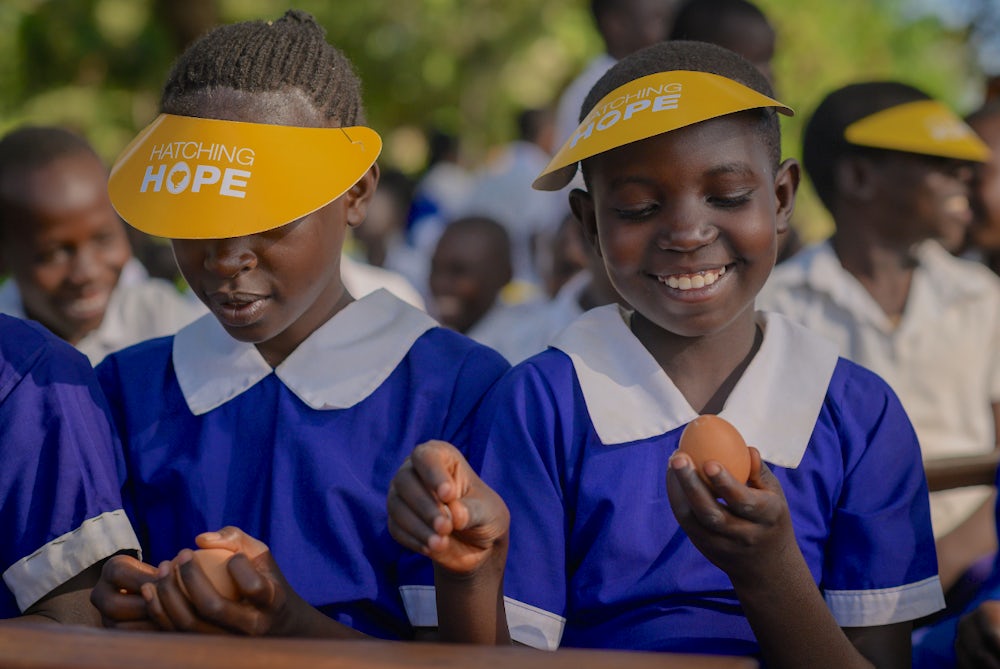
Have you ever considered the humble egg as a key to unlocking health and opportunities for future generations? Aside from being a staple for breakfast and a source of vital nourishment, eggs, along with chicken, have much more to offer.
Enter Hatching Hope, a partnership between Cargill and Heifer International designed to combat hunger and poverty through poultry farming. Through activities like songs, skits and murals, this initiative harnesses the power of poultry education to inspire young minds, nurture future farmers and challenge unfavorable beliefs surrounding chickens and eggs. Follow along to uncover three benefits of poultry education in today's rural learning environments.

Rich in vitamins, zinc, choline and iron, eggs boost both physical and cognitive development — advantages critical for growing children. The high satiety index of eggs also helps foster a feeling of fullness, which enables students to focus on learning without hunger's distraction.
"Teaching a child on an empty stomach is really challenging," explained Madam Goretty, head teacher at Aolo Primary School, where Hatching Hope Kenya conducted poultry education in 2022. "Some of them miss lunch. They may even go without supper."
However, with an understanding of poultry's nutritional perks, children and teachers alike have become enthusiastic advocates for proper nutrition, embracing healthier eating habits when possible and sharing knowledge about the dietary advantages of poultry within their schools and broader communities.

In rural areas, where 80% of the world's poor reside and farm, poultry education lays the groundwork for careers in agriculture as young students learn about poultry's central role in reducing poverty, job creation and strengthening local economies.
The appeal of poultry farming lies in its accessibility. With fewer resources or investments required compared to other livestock, chicken rearing catalyzes transformation among low-income families in search of economic opportunity.
These learnings nurture aspirations and forge life skills that have the potential to influence both children's personal paths and the overall prosperity of their communities.
"Farming is a career," said Stacy, an eighth grade student at Aolo Primary School. "In my home, I can say that my parents, the main thing they do is farming. That's how we can have the basic needs [met] in the family. So, I think it's … good to be [a] farmer."

Teaching about poultry in schools dispels long-standing myths about poultry consumption, particularly in regions where cultural norms obstruct people from experiencing the nutritional and financial benefits of eggs and poultry.
In Kenya, for example, Hatching Hope collaborated with schools to teach students that it's acceptable for women and girls to eat chicken and eggs. Classrooms also promoted gender equality by using poultry education to encourage women and girls to participate in raising poultry — something that would typically go against social norms.
This approach goes beyond enriching students' understanding of affordable and locally available foods to create a more informed and equitable society free from the constraints of traditional taboos.
Chicken and eggs are more than just delicious food options. They're gateways to a brighter future. Through Hatching Hope’s work in schools, poultry is not merely sustenance but a tool for transformative change. These efforts in education resonate throughout rural learning environments, paving the way for sustained benefits that will be felt by generations to come. In this context, the modest egg has much to teach us all.